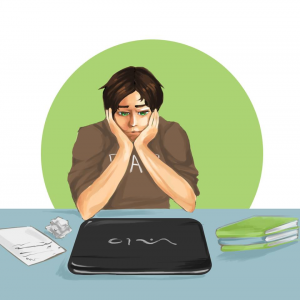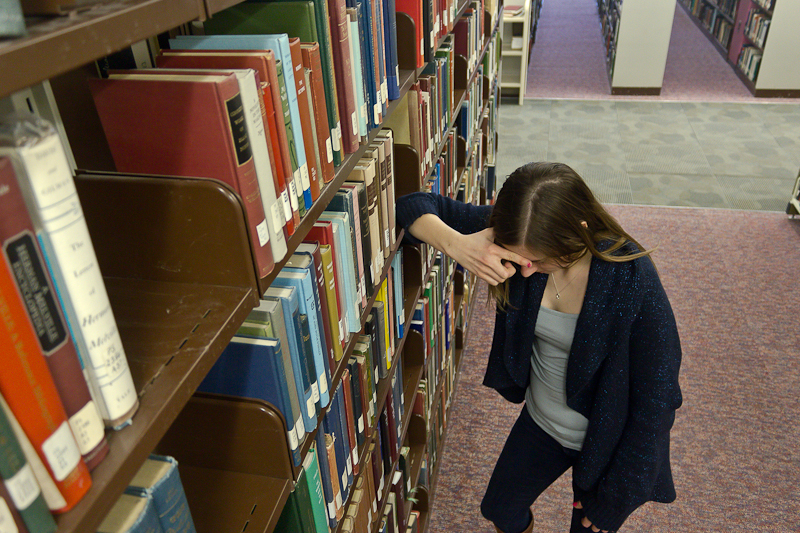A former Carleton University student, who has asked their name be retracted, said they started experiencing symptoms of severe depression in high school due to multiple stresses in their life.
“The stress from being bullied when I was younger, mixed in with the stress of a heartbreak, the stress of just being a student, and not knowing where I wanted to go in my life,” they said.
They said this culminated in their Grade 11 year when they became severely depressed and suffered four drug overdoses, leading to a five-week stint in a hospital.
“I wanted to make a change about how we look at youth mental health,” they said.
But the issue did not go away.
“I was living in residence, and I was stressed out from being a university student and by the transition,” they said. “I didn’t want to reach out to get help . . . and I hadn’t coped with the issues I had in years prior.”
They dropped out of Carleton in November 2012, two months into the school year, and suffered another relapse in March 2013. Now a student at the University of Ottawa (U of O), they sought help from the school’s mental health facilities.
They praised Carleton’s mental health services, specifically the efficiency of its resources and ability to “prevent students from being too stressed out.”
But with awareness surrounding mental health increasing, one area that still needs to catch up is the training of residence fellows, they said.
They said residence fellows relied heavily on standard protocol. Rather, they said they should have worked with the student to resolve the issues they were having.
Resources on campus
Carleton has a wealth of mental health resources that vary in nature, in order to reflect the different kinds of struggles that students may be experiencing, according to Patty Allen, a mental health nurse at Carleton’s Health and Counselling Services (HCS).
“If a student wants to seek counselling here, they have fill out an intake counselling form, which is available either online or in the clinic,” Allen said. “Once they fill that out, I meet with them initially and do an initial assessment to figure out what resources are best suited for them.”
Allen said HCS will then direct students to the appropriate channel.
“This may mean referring them to a counsellor, sending them to the Paul Menton Centre, or they might have to go to the [Student Academic Success Centre] if it is more of an academic issue stressing them out,” Allen said.
For those requiring immediate assistance, trained nurses are on hand to conduct an initial assessment so patients can see a physician immediately, or HCS will direct patients to get hospital help.
Otherwise, initial assessments usually take two to three days, and Allen said if someone does need clinical help, the wait time typically is no more than two weeks.
“Our mandate here is very much to provide a brief intervention in order to get a student back functioning with their academics,” Allen said.
HCS director Maureen Murdock said part of the reason it can take up to two weeks for a student to see a counsellor is the constantly increasing demand. HCS receives 3,200 visits per year, and 200 a day, according to Allen.
Murdock said while HCS provides short-term counselling, they will not cut anyone off, so it is not uncommon for a student to receive eight sessions or more.
Additional funding would benefit HCS so it could provide more counsellors, Murdock said. Currently, there are three permanent and three contract counsellors working in the clinic, in addition to six general practitioner therapists who work between one to three days each and only provide counselling.
There is also a “strong partnership” between HCS and Carleton residence, according to Allen, as HCS trains staff who work in housing. There are three HCS counsellors who work in residence as well.
With demand for mental health services increasing, U of O is also advancing its mental health strategy, according to Murray Sang, director of the school’s Student Academic Success Service (SASS).
Sang said the university’s mental health services received 6,000 visits in the 2012-13 academic year. That represents 15 per cent of the school’s population, according to Sang.
He described the “two streams” of mental health resources that exist at the university. SASS is the first of these streams, Sang said, calling it the “main focus” of the school’s mental health program, where students initially go to get evaluated.
SASS provides counselling and coaching services to students who need a more basic level of mental assistance, Sang said.
“For the more serious, complex cases, we refer students to our health service clinic . . . where they go to be seen by a physician,” he said.
Sang said he believes these services are well advertised on campus, with every course pack equipped with information about SASS and the university’s counselling services.
Additionally, SASS sends mass emails to students about its services around the “critical times” of the academic year, such as at the start of the term, during midterms, and finals.
Sang said students seeking counselling only have to wait a day or two to receive help, while students in need of a physician typically wait around a week.
He credited the short wait time to U of O having added additional resources, including both contract and peer counsellors. There are currently 12 counsellors on-hand, including three working full-time in residence.
Sang said while there is no official maximum number of sessions, the average number per student is three to four.
Public support
The Pinecrest-Queensway Community Health Centre in Ottawa offers mental health walk-in services during the week from 12:30-3:15 p.m.
Tim Paquette, an intake worker at the health centre, said the goal of the service is “solution-focused short term support.”
“We don’t have long-term counselling here on-site, but we do have a number of service providers who provide that service in our community,” Paquette said. This form of service can take weeks or months to receive, he said.
“What we can do is sometimes help bridge that gap. We would assess and then provide ongoing support to bridge that,” he said.
After walking in and getting assessed, patients are matched up with a counsellor within the day, in order to provide short-term counselling, Paquette said. These short wait times are particularly useful for post-seconday students that make use of the service, he said.
“It can sometimes alleviate a lot of the tension that individual’s feeling,” Paquette said. “It’s important for them to link with someone, to be able to have someone validate and listen and acknowledge what they’re going through, rather than not even see anyone and sort of stay at the point that they’re at. That can’t always go on for an interminable amount of time because they can escalate.”
The service also helps fill gaps in the public health system regarding counselling and support.
“I suspect that there’s a huge backlog . . . in the hundreds,” Paquette said. “I think part of that is the fact that there have been cutbacks in services for people with mental health issues.”
Government response

Student associations are demanding more mental health services on campus.
In 2012, the Ontario Undergraduate Student Alliance (OUSA), submitted a report to the provincial government, outlining recommendations for better mental health resources on campus.
“The biggest recommendation was the creation of a mental health innovation fund, which the government actually did, and we were quite pleased to see,” OUSA vice-president (finance) Steven Franchetto said.
The province responded with a $27 million investment over three years to create new projects aimed at tackling mental health on campus.
Franchetto said OUSA is happy with the government’s commitment to mental health, but said more needs to be done.
“With 40 per cent of students using mental health services by fourth year . . . there’s more work to do,” he said. “It’s continuing to be a bigger problem. We need to keep supporting students.”
Brad Duguid, Ontario minister of training, colleges, and universities, agreed.
“One in five of our students generally are at risk of mental illness. We need to make sure that this very significant group of students are getting the supports they need in order for us to meet our goals for our students to succeed,” Duguid said.
Duguid said money from the innovation fund is being put toward 20 projects, one of which is a 24-hour mental health phone line called Good2Talk.
“All are geared to new, cutting edge innovative ideas, to try to drive all of our institutions towards best practices,” he said.
Duguid said many of these programs aim to address the root causes of mental health.
“A lot of these 20 programs are involved in greater awareness for students and instructors, to be able to identify these prospects for mental illness early on so these students can get the help they need,” he said.
Duguid praised the Carleton University Student Mental Health Initiative in this regard, calling it “one if the leaders in this area.”
In October 2013, the government committed $640,000 toward the program. The program reaches out to high school students to identify those who may need help transitioning to post-secondary education because of mental health, Duguid said.
“They’re not just plunked into a post-secondary institution and have to start all over again to find the services they need in order for them to succeed,” he said.
An ongoing issue
Jan. 28 marked this year’s Bell Let’s Talk day, an annual program aiming to break the silence around mental illness through increased awareness.
The former Carleton student said their work relating to mental illness “is certainly not done” and they are trying to reach out with their story to as many young people as possible.
“Mental health is the exact same as physical health,” they said.
They said they feel universities should be giving equal attention to both, especially due to the stigma that still surrounds it.
For this student, their own mental health is an ongoing issue. They said they have made progress since their last relapse in March 2013.
“Mental illness is something I’ll have to deal with for the rest of my life,” they said.






